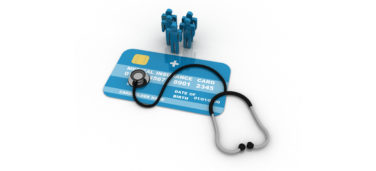As pharma companies began to professionalize their point-of-care (POC) messaging strategies, they moved to multichannel marketing programs. Now the focus is on an omnichannel approach, which includes posters and digital wallboards, connected TV, geo-targeted digital ads, and more.
Included in this approach is reaching healthcare professionals (HCPs) where and when it matters most—in the EHR when the prescription is being written. But how do marketers and their advertising agencies measure the effectiveness of those POC campaigns and show strong return on investment (ROI) when POC messaging cannot be pigeonholed into traditional ad metrics?
More than 90% of HCPs spend over 5.5 hours a day in the EHR. The ability to connect them to patient savings offers and other clinical and educational information in workflow through their EHR systems helps drive awareness and adherence, with brands seeing incremental script lift and usage as a result.
The Effectiveness of Point of Care Messaging
Indeed, HCPs are nearly twice as likely to click on ads in endemic environments—places that are naturally relevant to the market(s) they target—than in non-endemic environments, and 72% are unlikely to click on ads in non-endemic environments.1 The ability to have key information immediately available helps maintain the relationship between HCPs and their patients.
Internal ConnectiveRx data confirms the effectiveness of POC messaging to HCPs. An analysis of recent messaging programs showed that HCPs respond to in-workflow messages that include current formulary information. A study of eight programs in which the messages included such information yielded an average 11.9% script lift.2 Additionally, a study of 27 programs that featured brand messages plus patient savings offers resulted in an average 11.5% script lift.3
Because of the nature of these programs, POC messaging is usually more educational and not as promotional as traditional digital ads. This requires a longer campaign (six months or more) to drive the content and its value to the HCP and ultimately the patient.
Properly Measuring HCP Engagement in the EHR
It is important to understand the difference between sessions and impressions when measuring HCP engagement with POC messaging. While an impression represents an opportunity to influence an HCP with specific information in the EHR, a session is the accumulated number of impressions served during an allotted timeframe.
Throughout a session, banners appear in real time when an HCP meets the triggering criteria and then remain on screen through the entire medication selection process. These multiple screens include medication selection, prescription details, benefits check, etc., all the way to the prescription being sent to the pharmacy.
Over the course of a patient visit, brands have the ability to send HCPs a range of targeted information including coupon/copay program details, clinical/study information, and changes in dosage/formula. All content for patients is generated by the HCP’s actions and sent via patient portal, print, or text message.
Measurement of a POC messaging program should be determined by overall program objectives. For example, if the goal is script lift for a new prescription but not necessarily a new therapy (NRx), a patient who is new to the brand (NBRx), or total prescriptions (TRx) for a late-cycle brand, a POC messaging program would need to run at least six months in order to see changes in prescribing behavior.
Test and control analysis is another methodology that can be highly effective for measuring POC messaging programs. By exposing an audience to a specific tactic while not exposing the same tactic to a subset of that audience, we can measure the test audience, providing a good read of resulting changes in prescribing behavior.
Reaching Patients with Point of Care Messaging
POC messaging campaigns can also reach beyond HCPs, serving as effective ways to reach patients and increase awareness and adherence. For example, ZS reported that 68% of patients requested a pharmaceutical brand that they had been exposed to in POC marketing, and 65% of patients indicated a willingness to switch brands after seeing POC messaging.4
Patients are also 84% more likely to ask clinicians about a drug they were exposed to through POC messaging. Even more impressively, POC marketing decreases prescription abandonment and increases persistence, with patients being 31% more likely to fill their prescription.
Overall, data shows that direct-to-patient messaging programs decrease prescription abandonment, boost adherence and persistence, and improve prescription refill rates.
Tailoring messaging strategies to today’s technology is critical for brands and their agencies to achieve a strong ROI. Delivered at the right place to the right person and at the right time, POC messaging has become a critical way to increase brand awareness and prescribing and ultimately achieve better health outcomes. Marketers should work closely with their messaging partners to optimize their strategy today—and position themselves to leverage new solutions tomorrow.
References:
1. “HCPs Preferences on Endemic vs. Non-Endemic Ads,” Healio Strategic Solutions, 2023.
2. ConnectiveRx proprietary data.
3. ConnectiveRx proprietary data.
4. Evans, H., & Summers, V. (n.d.). “The Evolution of Point-of-Care Marketing in Pharma.” ZS. https://pocmarketing.org/wp-content/uploads/2022/01/Evolution-of-Point-of-Care-Marketing-in-Pharma-ZS-study.pdf.









